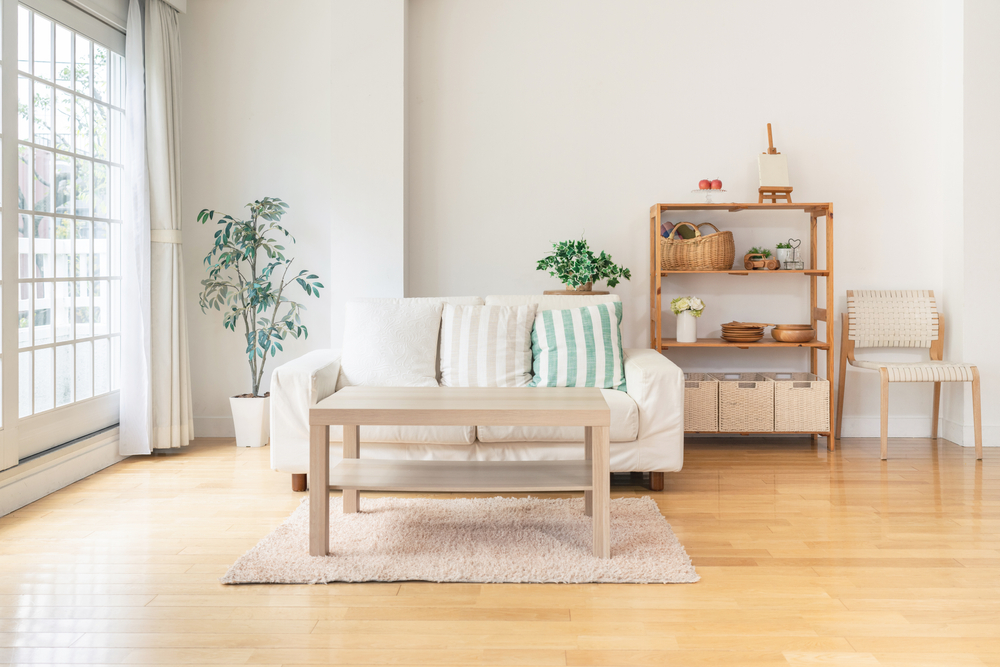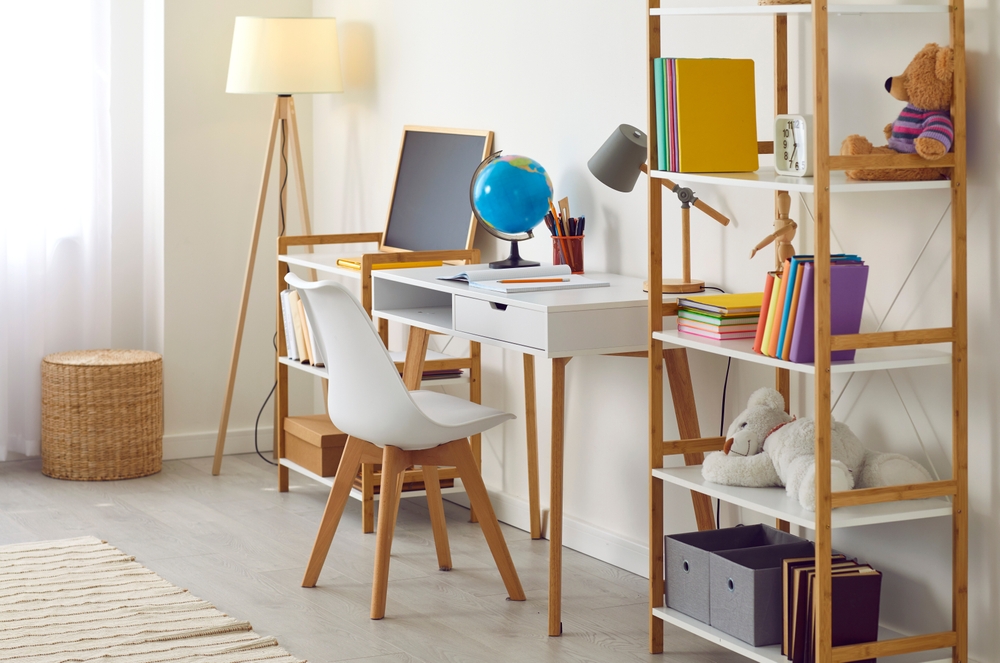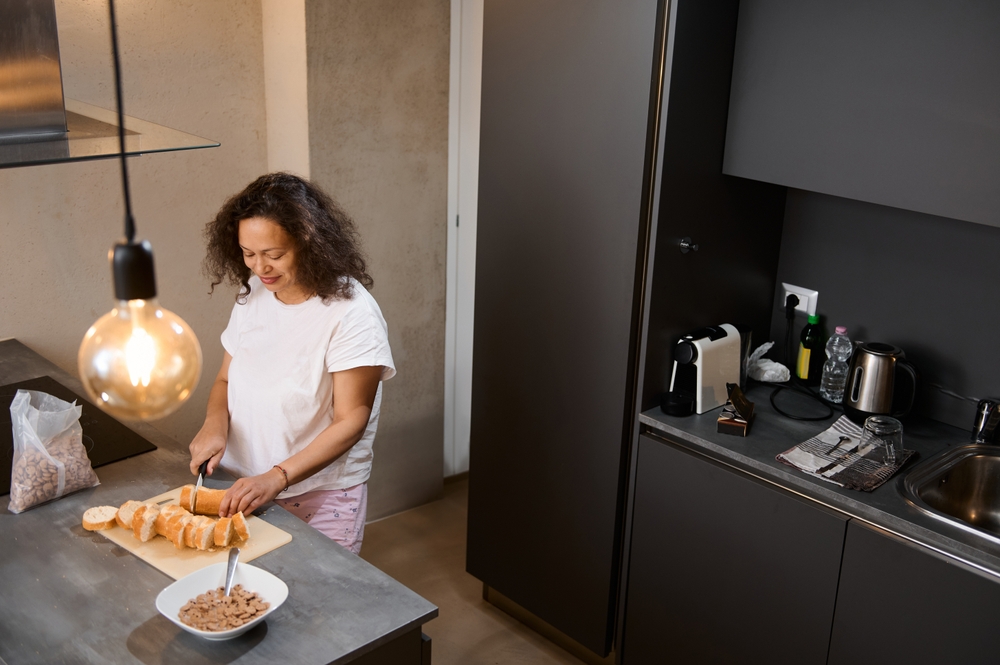Living with ADHD can be incredibly challenging, with busy city streets full of overwhelming colors and noises, so having a comforting home environment to relax in is crucial. Let’s look at the best ways to create an ADHD-friendly home for your child.
What is an ADHD-Friendly Home?

An ADHD-friendly home is designed to accommodate the needs of individuals with Attention-Deficit/Hyperactivity Disorder (ADHD), a neurodevelopmental condition that affects focus, impulse control, and organization. ADHD manifests in varying degrees of inattention, hyperactivity, and impulsivity, making daily tasks and routines challenging for both children and adults. Living with ADHD can be overwhelming – children may struggle with homework, chores, and social interactions, while adults often face difficulties in managing time, organizing spaces, and maintaining relationships.
An ADHD-friendly home focuses on reducing distractions and providing clear structure. This includes creating organized spaces where everything has its place, using labels and visual cues to help with navigation, task management, and establishing routines that are consistent yet flexible. For example, designated areas for homework or work, free from excessive stimuli, can help improve focus. Sensory-friendly features, like soft lighting and quiet spaces, can also be beneficial.
Conversely, an ADHD-friendly home should avoid cluttered spaces and busy, chaotic environments, as these can exacerbate feelings of stress. Overly complex organizational systems or environments that are too rigid can also be counterproductive, as they may be overwhelming or difficult to maintain.
Ultimately, the goal is to create a supportive and structured environment that fosters independence and reduces stress for individuals with ADHD, helping them to better manage their symptoms and improve their overall quality of life.
How to Optimize Your Home for Your Children with ADHD

To accommodate a child with ADHD, the decor and environment of living spaces and bedrooms should focus on creating a calming, organized, and distraction-free atmosphere. Each space has its dedicated activities, so try to arrange each space to help encourage those activities, like focus in a study area, or calm in a bedroom. Here’s how you can achieve this.
Calming Colors and Lighting
Use soothing, muted colors like soft blues, greens, pastel colors and neutral tones. These colors can help promote a sense of calm in your home, reducing overstimulation and making it a safe environment for any child with ADHD. Avoid overly bright or vibrant colors, which can be distracting or overstimulating.
Opt for soft, natural lighting where possible. Not everyone can redesign the structure of their house to incorporate huge windows for natural light, but you can change your bulbs and redecorate or change the positioning of your furniture to make your rooms feel lighter and more calming.
Harsh, bright lights can be overwhelming, so consider dimmable lights or lamps that create a warm, cozy environment. Blackout curtains can help block out bright sunshine when you’re trying to sleep, which is crucial for maintaining a good sleep routine and a healthy mind.
Minimizing Distractions
Keep surfaces clean and clutter-free, especially in study or sleep areas. Too many items on shelves or desks can be distracting and make it harder for a child with ADHD to focus. It can be very easy to get into the habit of leaving your keys on the table when you get in, kicking your shoes off and dumping your coat over the back of a chair, but all of these small things can build up to create a picture of disorganized clutter which can negatively impact a person with ADHD’s thought processes.
You can also help to minimize distractions by choosing simple, minimalistic decor. Avoid busy patterns, excessive wall art, or decor that might be visually overwhelming. Instead, use a few meaningful or calming pieces that do not draw too much attention, but still allow you to add character and beautify your home.
Functional, Organized Spaces
Create specific zones for different activities, such as a quiet reading nook, a study area, and a play space. Each zone should be clearly defined to help your child transition between tasks, without being overstimulated while trying to act in a certain way. Play is essential for children, so make sure there is space for them to be creative and have fun, but this space should be away from calm areas such as the bedroom and study areas to allow for focus and rest.
You can also incorporate storage solutions like bins, shelves, and drawers with clear labels to make it easier for your child to find and put away items, promoting independence and reducing chaos.
By adjusting the decor and environment in these ways, you can create a home that supports your child’s needs and helps them manage their ADHD symptoms more effectively.
Avoiding the Myths Around ADHD

Myths surrounding ADHD often stem from misunderstandings about the condition, leading to harmful stereotypes. One common myth is that ADHD is simply an excuse for laziness or poor behavior, implying that children or adults with ADHD are getting away with something. Some believe that ADHD is caused by bad parenting or a lack of discipline, which unfairly places blame on families and ignores the genetic and biological factors involved. This misconception overlooks the neurological basis of ADHD, which makes focus, impulse control, and organization genuinely challenging.
Another myth is that ADHD is only a childhood disorder, suggesting that individuals outgrow it. In reality, ADHD can persist into adulthood, with symptoms evolving over time. Plenty of adults have ADHD and can be incredibly successful when their needs are supported properly.
To avoid these stereotypes when creating an ADHD-friendly space at home, it’s crucial to approach design with understanding and empathy. Recognize that children with ADHD need environments that support their unique needs rather than punish them for their challenges. This means avoiding punitive or overly rigid spaces, which can reinforce feelings of inadequacy or frustration.
Instead, focus on creating spaces that promote success by minimizing distractions and providing clear organization. Design with the understanding that ADHD is a real, neurological condition that requires specific accommodations, not just stricter rules. Emphasize strengths, like creativity and energy, by incorporating flexible spaces that allow for movement and expression.
By dispelling myths and stereotypes, you can create a home environment that empowers individuals with ADHD, fostering their growth and well-being.
Making Your Kitchen ADHD-Friendly

Making your kitchen ADHD-friendly involves creating an environment that supports healthy choices, minimizes distractions, and promotes organization. Here are the main factors to consider:
- Organize your kitchen space clearly
- Stock up on healthy foods
- Understand the relationship with caffeine
- Food prep for ease
Good storage is crucial. Clear, labeled containers help keep food items visible and accessible, reducing the chaos that can overwhelm someone with ADHD. Arranging items by category, like snacks, breakfast foods, or meal ingredients, makes decision-making easier and prevents impulsive choices that may not be beneficial to the individual. A well-organized pantry and refrigerator help maintain a clear mind, as clutter can contribute to stress and decision fatigue.
You should also stock your kitchen with nutritious foods that support brain health, such as fruits, vegetables, lean proteins, whole grains, and omega-3-rich foods, like fish and walnuts. Foods high in sugar or processed ingredients can exacerbate hyperactivity and mood swings, so it’s best to minimize these.
Caffeine has a complex relationship with ADHD. For some people, caffeine can enhance focus and attention, acting as a mild stimulant similar to ADHD medications. However, for others, it might increase anxiety or disrupt sleep, particularly if consumed in excess. It’s important to monitor how caffeine affects the individual with ADHD and adjust consumption accordingly.
Finally, ensure that your kitchen setup encourages healthy eating by making meal prep simple. Keep frequently used tools and ingredients within easy reach, and consider preparing grab-and-go snacks ahead of time to reduce the temptation of unhealthy options, as well as ensure it’s easy to grab something to eat quickly, as some people with ADHD can easily forget about mealtimes when they’re hyperfocused on another task.
Contact the Brain Workshop for Help
While it can be useful to read about tips and tricks to manage your or your child’s ADHD, there is plenty we still need to learn about the condition that can help us in our everyday lives. At the Brain Workshop, we help people understand ADHD and how to help themselves and their families to support themselves.
You can learn more about us and what we do here.






